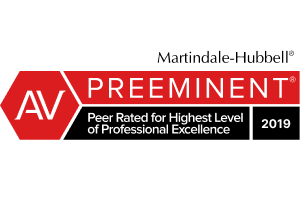Apply Now! Paycheck Protection Program Is A Life Saver For Small Business
By Phil Rarick, Jacqueline Bowden Gold, and Jay Beskin, Miami Lakes and Weston Business Law Attorneys
Note: The following is a preliminary review of key parts of the CARES Act; this commentary is subject to change upon guidance from the SBA and U.S. government
On March 27th, Congress passed and the President signed into law a $349 billion “Paycheck Protection Program” as part of the massive Coronavirus relief package. This program will likely be a life safer for many small businesses. It is available through June 30, 2020, however Congressional leadership has already discussed extending it for additional months.
The program provides short term loans for small businesses equivalent to 250% of the employer’s average monthly payroll (or roughly 10 weeks of payroll expenses) or $10 million, whichever is less. Payroll costs are broadly defined as wages, salaries, retirement contributions and health care benefits. The loan can also be used for rent, mortgage and utilities.
The most important feature is that these “loans” can be forgiven during the 8 week period after origination of the loan if the company maintains its payroll through June 30, 2020 for eligible payroll costs, interest payments on any mortgage incurred prior to February 15, 2020, payment on any utility for which service began before February 15, 2020, payment of rent on any lease in force prior to February 15, 2020, and interest payments on any mortgage incurred prior to February 15, 2020 (excludes principal and prepayments).
Essentially, most, and possibly all of the loan, is turned into a grant – and this forgiven loan is not considered taxable income!
The most important take-away point is this fund is limited and will be on a first come, first receive basis. You can expect intense national competition for these funds. So get your application in early – such as right now!
Here are the other big Take-Away Points:
- Who Is eligible? Businesses with 500 employees or less, sole proprietors, individual contractors, self-employed individuals, non-profits, and other businesses.
- How do you calculate the total loan amount? Average eligible monthly payroll costs, excluding compensation above $100,000 in wages (based on prior 12 months) multiplied by 2.5 (represents months) – plus – the balance of any SBA Loan closed between 1/31/2020 and when this loan will be made, if applicable – OR – $10 million whichever is less.
- What are the payroll limits per person? $100,000
- What collateral is required? None
- Are personal guarantees required? No
- What is the interest rate? 4%
- Does your business need to demonstrate actual economic harm? No, they need to make a series of good faith certifications, such as that the loan is needed to support on-going business operations, and that the funds will be used to maintain payroll and other covered expenses.
- How do you apply? With any Small Business Administration (SBA) approved lender, such as your bank or credit union that is authorized to do SBA 7(a) loans. Anticipated documents to apply are listed below.
Conclusion:
$349 billion is a large sum of money – but we are large country driven by small business and demand will certainly exceed even this large amount. As mentioned, there will be intense competition so apply now and try to get near the front of the line. We hope this brief summary is helpful.
Sincerely,
Phil Rarick
P.S. Watch out for scammers! The Miami-Herald has already reported about a person receiving a “Coronavirus relief check” from an Orlando area source – even though, of course, the government has not sent out any checks yet.
Short List of Anticipated Documents for Payroll Protection Program Loan:
- Completed Application
- SBA Form 1919 or corresponding SBA Form 912, if applicable.
- Articles of Incorporation/Organization of each borrowing entity
- By Laws/Operating Agreement of each borrowing entity
- All owners Driver’s Licenses
- Payroll Expense verification documents to include:
- IRS Form 940 and 941
- Payroll Summary Report with corresponding bank statement
- If a Payroll Summary Report is not available, Employee Pay Stubs as of February 15, 2020 (or corresponding period) with corresponding bank statement, and,
- Breakdown of payroll benefits (vacation, allowance for dismissal, group healthcare benefits, retirement benefits, etc.
- 1099s (if Independent Contractor)
- Certification that all employees live within the United States. If any do not, provide a detailed list with corresponding salaries of all employees outside the United States
- Trailing twelve-month profit and loss statement (as of the date of application) for all applicants
- Most recent Mortgage Statement or Rent Statement (Lease)
- Most recent Utility Bills (Electric, Gas, Telephone, Internet, Water)











